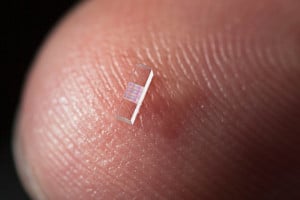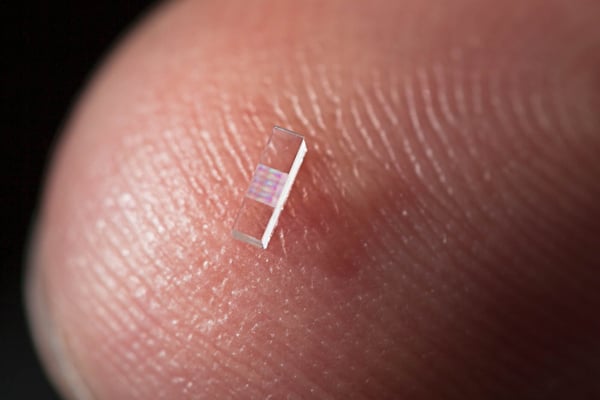Stanford researchers have created a chip-sized particle accelerator smaller than a grain of salt and capable of accelerating electrons near the speed of light.

The work surrounding the chip-sized accelerator was published in Nature, in which Stanford graduate students explained how their creation is capable of accelerating particles ten times faster than the existing SLAC accelerator.
Edgar Peralta Ph.D. ’14 — who currently works in a Stanford applied physics lab led by Professor Robert Byer M.S. ‘67 Ph.D. ’69 — created the chip-sized accelerator. Peralta said that the chip was basically the structure that was put out seven years ago by Tomas Plettner Ph.D. ‘03, who also worked under Byer.
Peralta originally tried to construct the silica chip out of commercial parts previously purchased by Byer’s group, but the faulty ridges, or “gratings,” of the chip would have made the experiment unsuccessful.
He ultimately fused two wafer chips together to create a chip — essentially a tiny half-micron channel through which the particles are focused. From there, an infrared light interacts with the ridges in the channel to generate an electric field that boosts the electron’s energy.
The chip stands out from other particle-accelerator options because of how quickly the particles’ energy increases. At its full capacity, researchers envision the chip matching the 2-mile long SLAC linear accelerator in power, but doing so in 100 feet.
In the future, the team hopes to see this innovation applied in the real world.
“For me, I was interested in the direct application to radiation generation,” said Peralta.
Peralta envisions a future in which cancer patients will no longer be forced to travel by plane to reach cancer treatment facilities to undergo special treatment, because local hospitals could provide them with these services.
The research behind the accelerator is funded by U.S. Department of Energy’s Office of Science and Defense Advanced Research Projects Agency (DARPA).
